From Email Attachments to Organized Approved Content:
How Oracle Content Management Cloud Can Retrieve Email Attachments, Track Approvals and Organize Them as a Searchable Assets
By Courtney Dooley | Technical Architect
Are you tired of getting emails with file attachments that you have to manually move to the cloud for collaboration? Oracle Content Management Cloud offers out-of-the-box email capture capabilities that allow attachments to be saved and organized for review and approval processing.
Preparing the Attachments Storage Location
Email attachments can be stored within Oracle Content Management as files with limited metadata, or as complex assets with metadata and attachment references. Depending on the type of content you require, the below storage options are available.
1. Asset Repository
Content that may be published to a website or external source using publishing channels will need to be created within an Asset Repository.
2. Business Repository
Content that requires Approval but not publication should use a Business Repository for those attachments.
Both repository types support complex assets and will need security, content types, and language policies configured prior to creating the capture procedure.
3. Document Folder
A single folder is allowed as the destination for each commit profile, multiple profiles can ensure attachments are stored accurately. To group attachments, batch folders can be created in the destination folder. Approval workflows for folders and files require integration with Oracle Integration Cloud.
Getting the Attachment
To import emails, we need to first create a procedure under the Administration Capture page.
1. Security
After creating a new procedure, you will need to configure security for the user or group that will be executing the import.
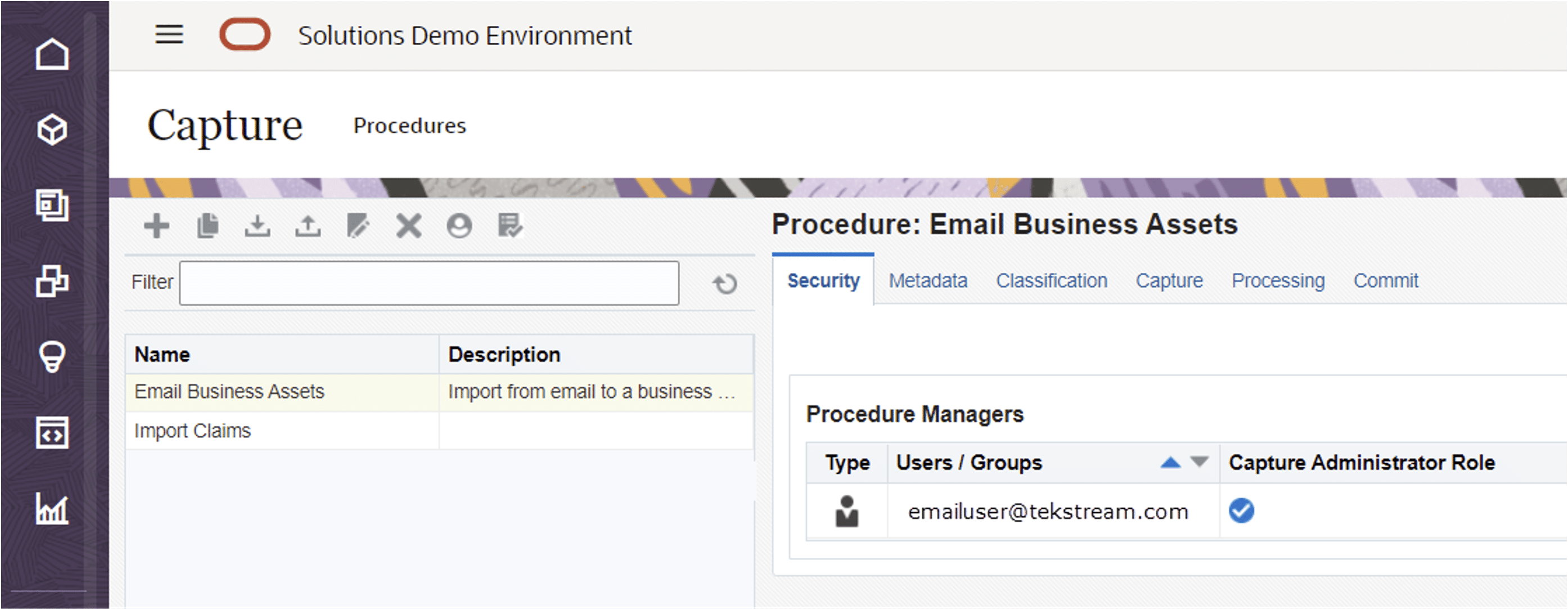
This user or group will need to have access to the chosen Folder or Repository.
2. Metadata
Within the metadata tab, fields can be defined. There is a limited amount of data available for each email. The message body is only available as a text or EML file.
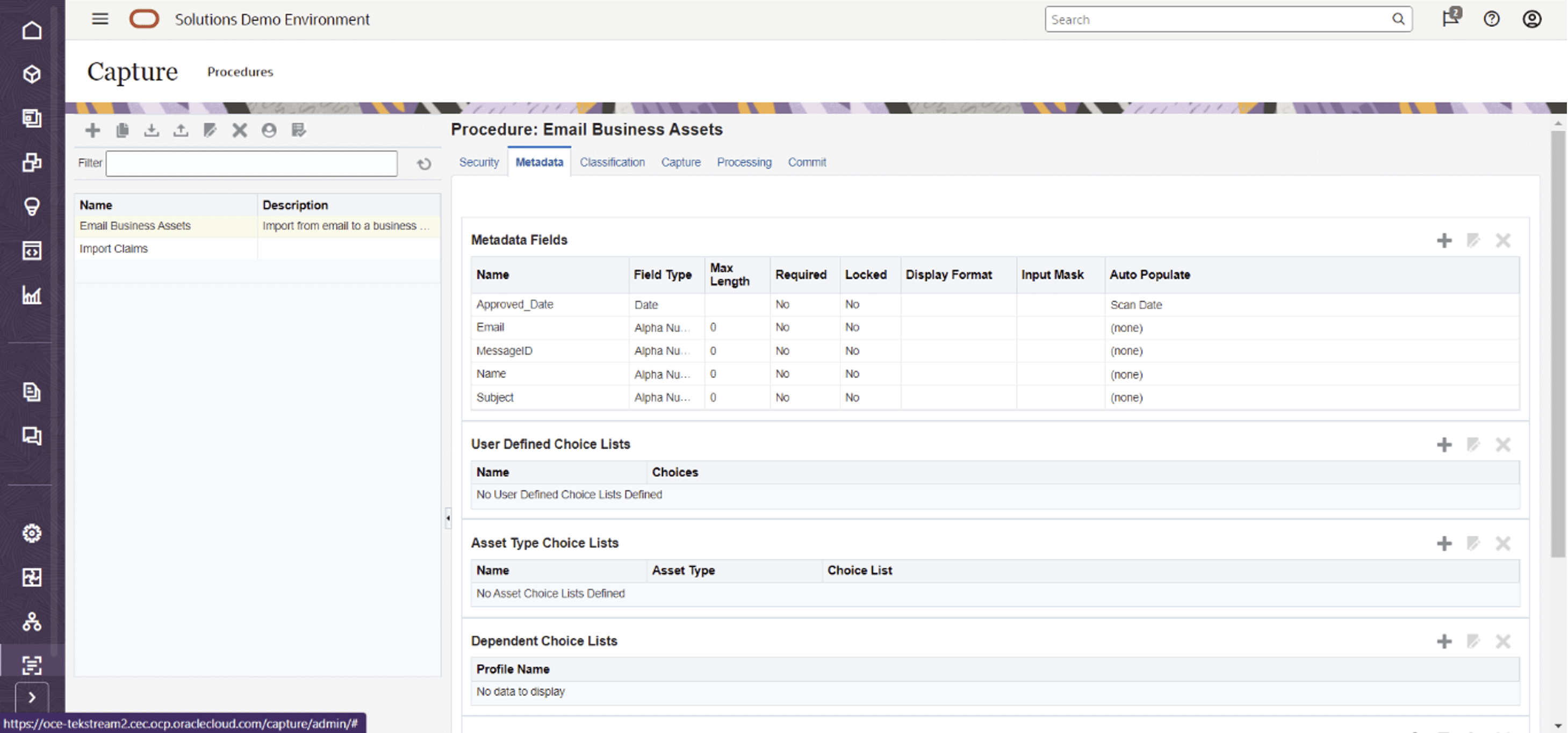
Other types of metadata definitions can be defined but are not used for this case.
3. Classification
Batch statuses, document profiles, and attachment types are all defined under Classifications. Attachment Types are assigned to document profiles and used within processor jobs.
4. Capture
Client profiles can be created and configured for additional users. These settings control how documents are created, separated in batches, and what metadata fields are available.
The Import Processor Jobs define the source where files will be captured. The settings for each job are outlined below:
- • General settings: batch prefix, import source (email)
- • Image Import Settings
- • Document Profile with Metadata Mapping
- • Import Source Settings
-
- ○ Email account connection settings
- ○ Message filtering by folder, from address, subject, and/or body
- ○ Message body and attachments capture options
- ○ Post processing email message handling
- • Post Processing (processor or commit)
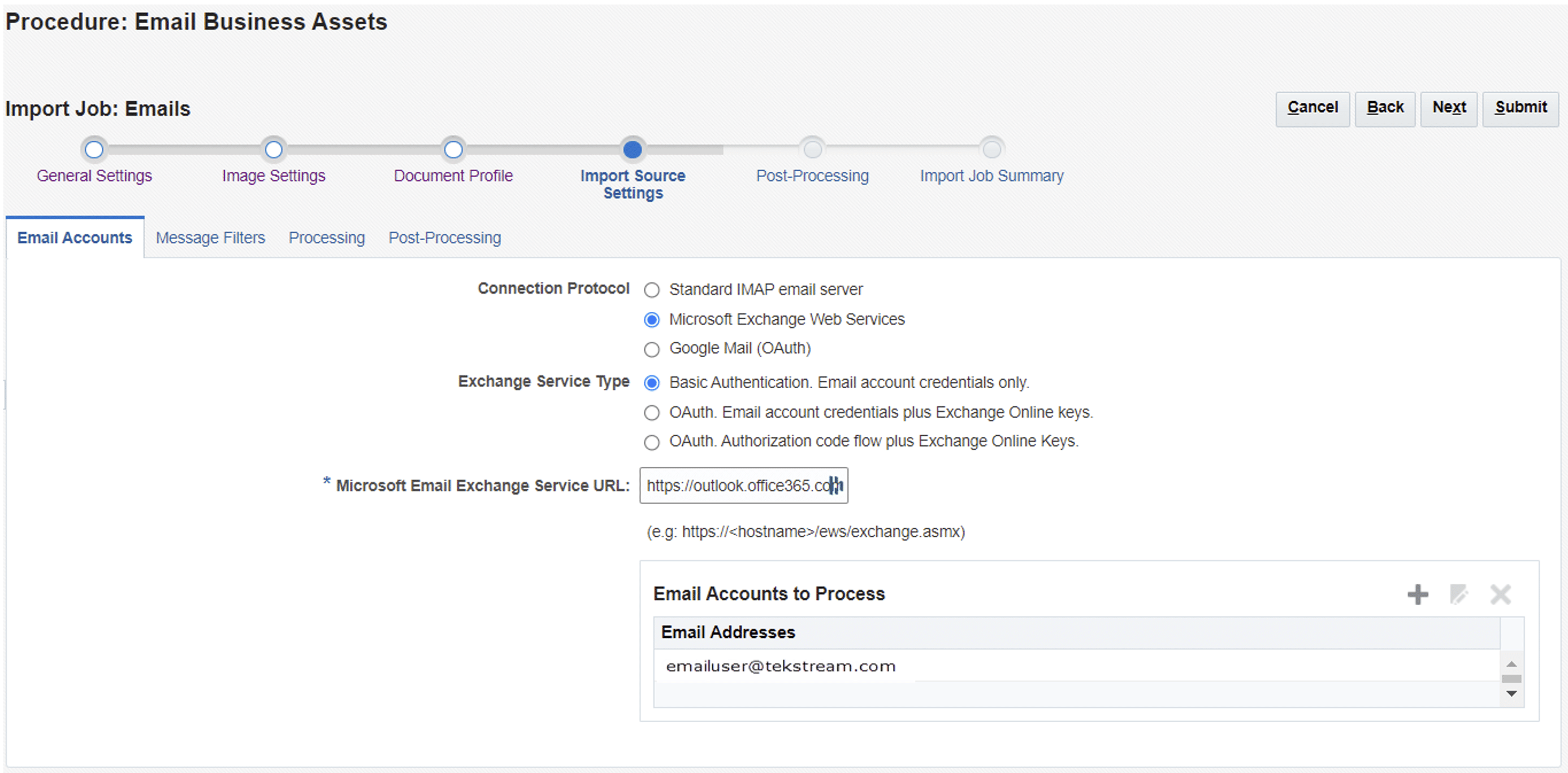
Inbox rules and folders should be configured before completing the import setup, and the type of email account must be one of the following:
- • Standard IMAP (Basic)
- • Microsoft Exchange Web Services (Basic or OAuth)
- • Gmail (OAuth)
5. Processing
Processing jobs can be configured for conversions to PDF or TIFF, XML Transformations, Character Recognition, or External Processors which can be configured to push or pull from Capture. Metadata Field conditional value assignment is also configurable.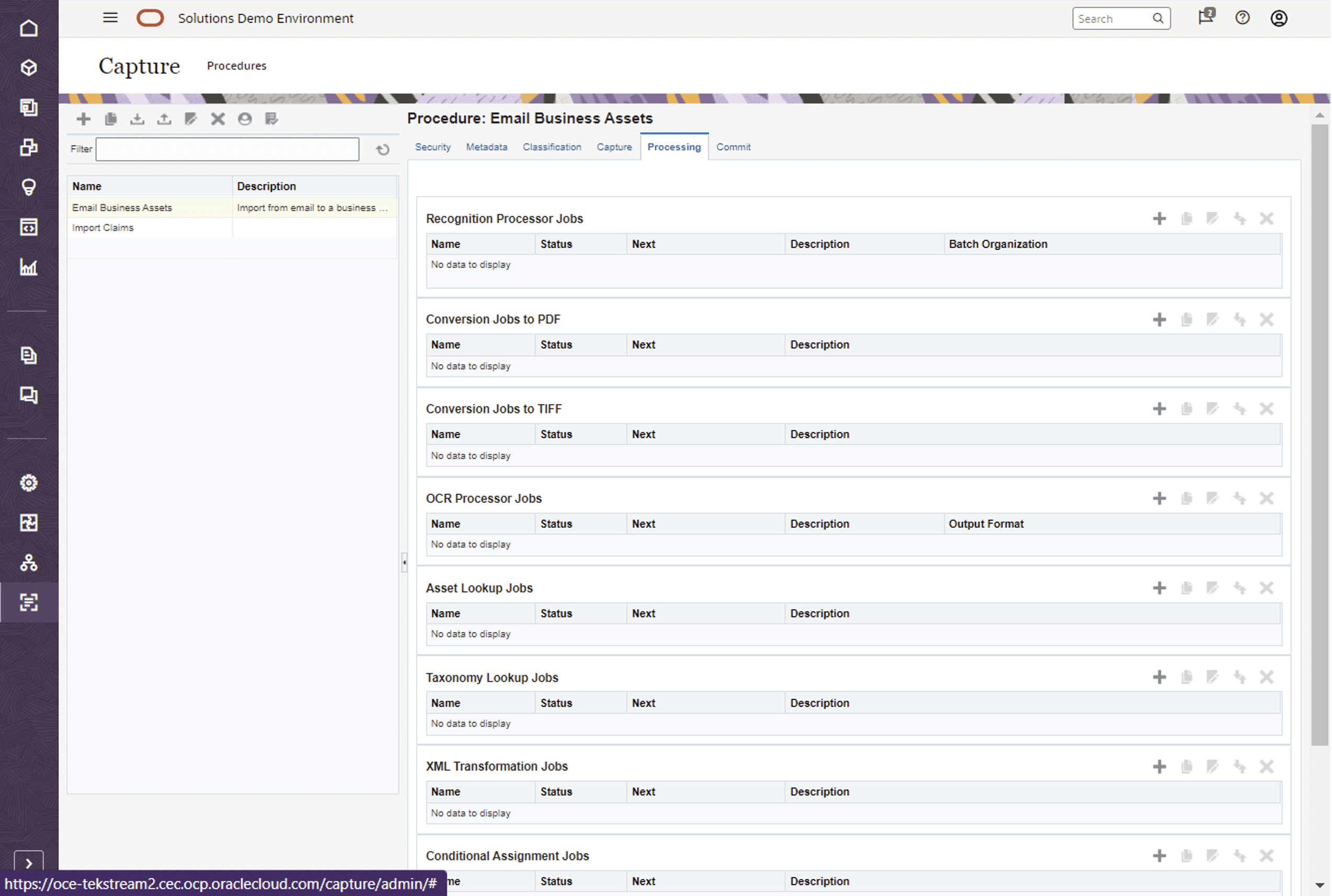
6. Commit
The commit profile defines how the files will be stored within OCM, selecting one of the three storage options outlined previously. Within the Commit Driver Settings, a parent content type can be selected to include additional details from the email and link attachments.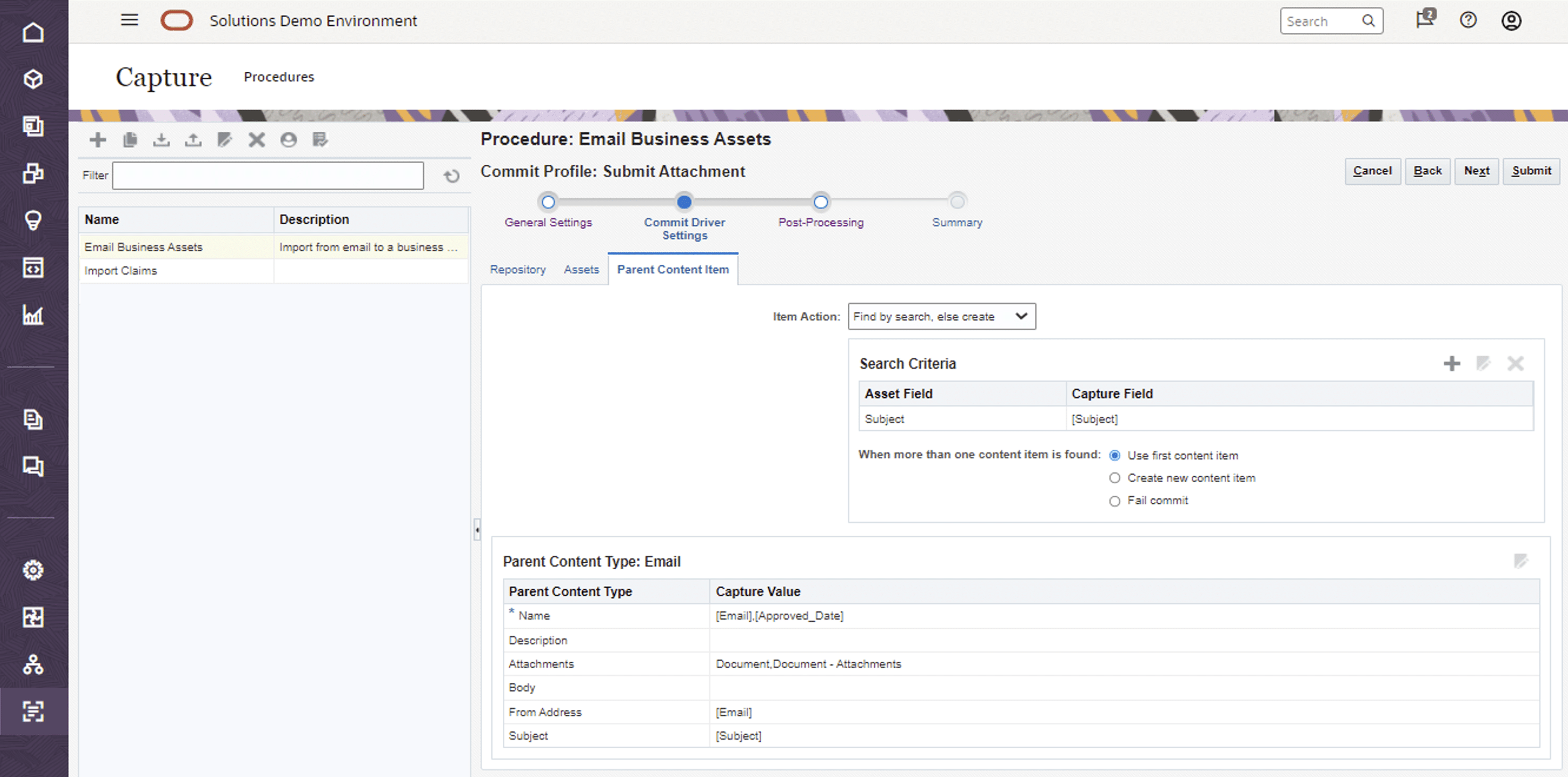
Reviewing the New Asset
1. Simple Workflow
Oracle Content Management includes a single approval process flow which allows contributors to submit for review, and repository managers to approve or reject. Collaboration via conversations is also available.
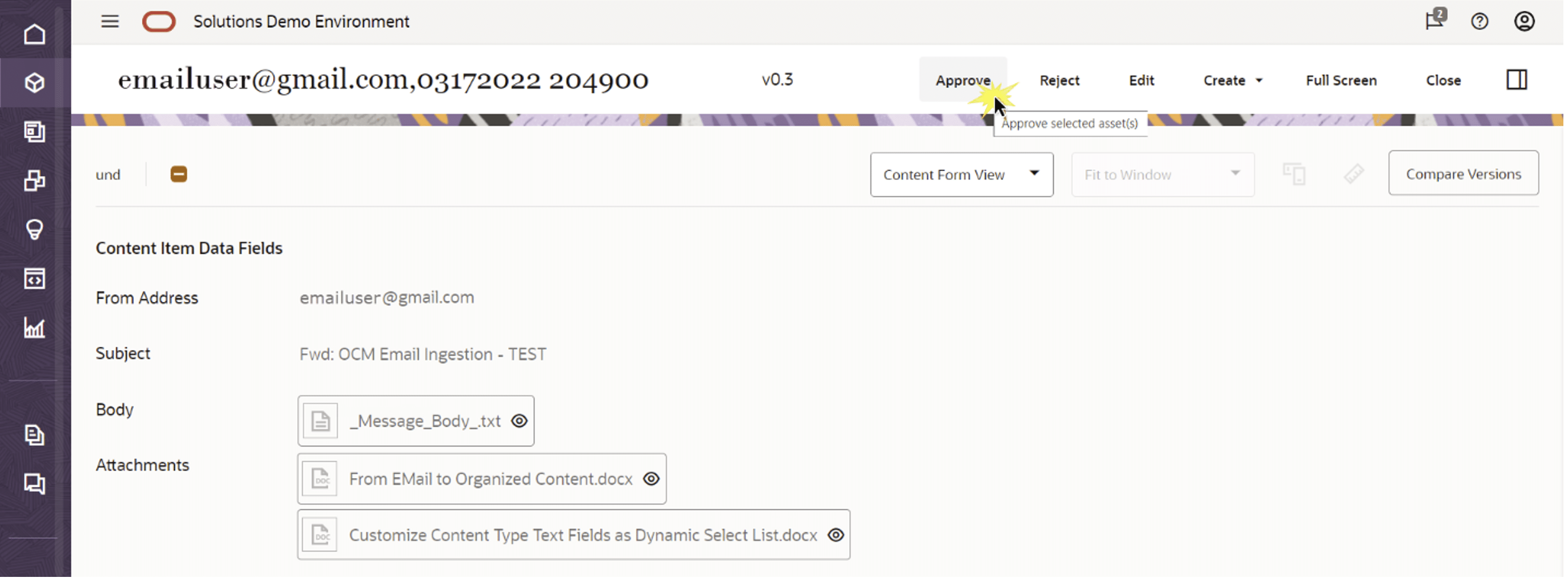
2. Extending Workflow
Oracle Integration Cloud Service has a built-in integration with Oracle Content Management that allows robust approval workflows and tight integration to all Assets, Files, and Folders. This integration includes role-based approvals, conditional progression, dynamic states, custom notifications, and integrations.
As you can see, Oracle Content Management Cloud offers many ways to keep your content organized and centralized for collaboration and approval.

